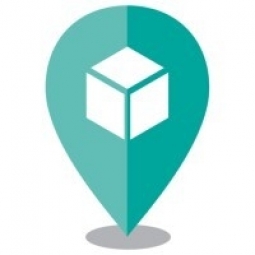Technology Category
- Analytics & Modeling - Real Time Analytics
- Networks & Connectivity - Gateways
Applicable Industries
- Retail
- Transportation
Applicable Functions
- Logistics & Transportation
- Sales & Marketing
Use Cases
- Last Mile Delivery
- Vehicle Telematics
Services
- Testing & Certification
About The Customer
Le Patissier is an award-winning patisserie business based in Dublin, Ireland. The business is made up of a team of talented pastry chefs led by chef and owner Robert Bullock. They were creating in excess of two million handmade desserts and patisserie annually, working with leading hotel groups, catering companies, food service, retail and wedding venues throughout Leinster. However, the COVID-19 pandemic forced them to pivot to home delivery routing for the consumer market. They quickly built a temporary online shop and began offering a collection service. As they promoted their online store and home-delivery service, demand began to increase, leading to new logistical challenges.
The Challenge
Le Patissier, an award-winning patisserie business based in Dublin, Ireland, faced a significant challenge when the COVID-19 pandemic hit. The lockdown led to a loss of almost 90% of their regular customers as public gatherings ceased and events were cancelled. They were left with only 2 wholesale clients, forcing them to pivot to home delivery routing for the consumer market. The company had plans to set up an online store, but it was still in the early stages of development. They quickly built a temporary online shop and began offering a collection service. However, as they promoted their online store and home-delivery service, demand began to increase. They had two delivery vans and one driver, and as the volume of orders increased, they had to lease a third van. This success brought new challenges, as they were spending 3-4 hours every evening planning the driver’s routes for the next day and dealing with increased customer enquiries.
The Solution
Le Patissier turned to SmartRoutes' delivery route planner to solve their logistics problem. They were able to extract customer delivery data from their online store and upload it into SmartRoutes, which allowed them to quickly and efficiently build a route plan for each van, saving them several hours of work each day. They were also able to maximize the number of deliveries per van with the technology, driving more sales. SmartRoutes offered a free trial for one week to test the software and helped them set up the routes. Le Patissier also used SmartRoutes' live tracking and real-time ETAs, which reduced the number of customer queries received on the day of delivery by almost 80%. The ability to see where each vehicle was in real-time meant they were able to give customers instant and honest updates when requested. SmartRoutes also provided full support and flexibility to scale according to the changing landscape.
Operational Impact
Quantitative Benefit

Case Study missing?
Start adding your own!
Register with your work email and create a new case study profile for your business.
Related Case Studies.

Case Study
Airport SCADA Systems Improve Service Levels
Modern airports are one of the busiest environments on Earth and rely on process automation equipment to ensure service operators achieve their KPIs. Increasingly airport SCADA systems are being used to control all aspects of the operation and associated facilities. This is because unplanned system downtime can cost dearly, both in terms of reduced revenues and the associated loss of customer satisfaction due to inevitable travel inconvenience and disruption.

Case Study
IoT-based Fleet Intelligence Innovation
Speed to market is precious for DRVR, a rapidly growing start-up company. With a business model dependent on reliable mobile data, managers were spending their lives trying to negotiate data roaming deals with mobile network operators in different countries. And, even then, service quality was a constant concern.

Case Study
Digitize Railway with Deutsche Bahn
To reduce maintenance costs and delay-causing failures for Deutsche Bahn. They need manual measurements by a position measurement system based on custom-made MEMS sensor clusters, which allow autonomous and continuous monitoring with wireless data transmission and long battery. They were looking for data pre-processing solution in the sensor and machine learning algorithms in the cloud so as to detect critical wear.

Case Study
Cold Chain Transportation and Refrigerated Fleet Management System
1) Create a digital connected transportation solution to retrofit cold chain trailers with real-time tracking and controls. 2) Prevent multi-million dollar losses due to theft or spoilage. 3) Deliver a digital chain-of-custody solution for door to door load monitoring and security. 4) Provide a trusted multi-fleet solution in a single application with granular data and access controls.

Case Study
Improving Production Line Efficiency with Ethernet Micro RTU Controller
Moxa was asked to provide a connectivity solution for one of the world's leading cosmetics companies. This multinational corporation, with retail presence in 130 countries, 23 global braches, and over 66,000 employees, sought to improve the efficiency of their production process by migrating from manual monitoring to an automatic productivity monitoring system. The production line was being monitored by ABB Real-TPI, a factory information system that offers data collection and analysis to improve plant efficiency. Due to software limitations, the customer needed an OPC server and a corresponding I/O solution to collect data from additional sensor devices for the Real-TPI system. The goal is to enable the factory information system to more thoroughly collect data from every corner of the production line. This will improve its ability to measure Overall Equipment Effectiveness (OEE) and translate into increased production efficiencies. System Requirements • Instant status updates while still consuming minimal bandwidth to relieve strain on limited factory networks • Interoperable with ABB Real-TPI • Small form factor appropriate for deployment where space is scarce • Remote software management and configuration to simplify operations




